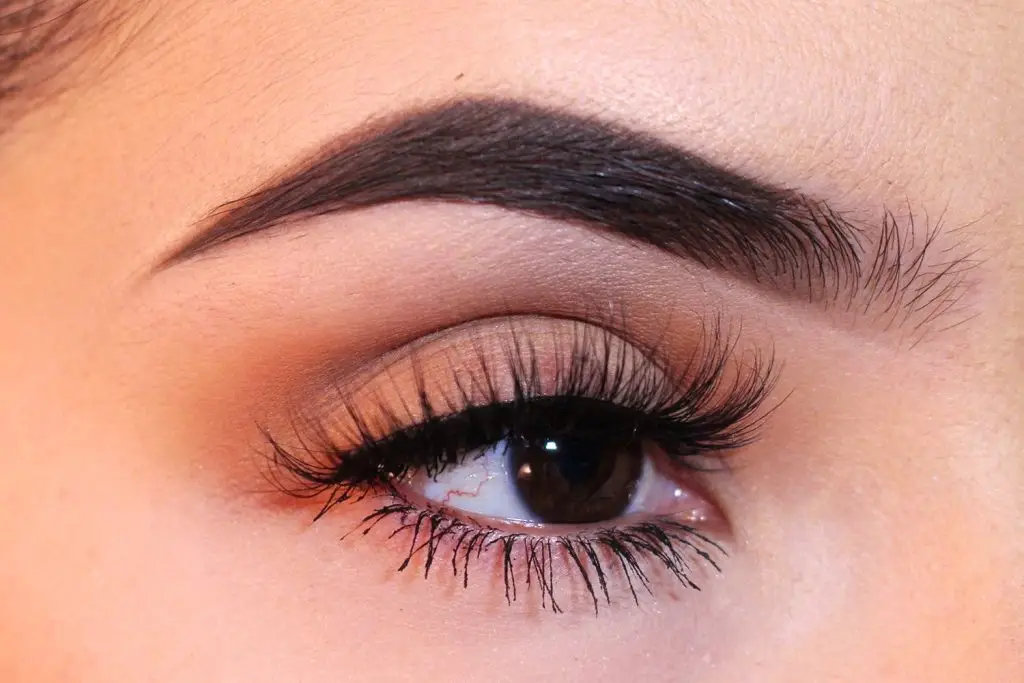The Rise of K-Beauty: How India’s Gen Z is Embracing Korean Skincare
The K-Beauty Phenomenon in India
The Indian beauty landscape is undergoing a remarkable transformation, with Korean skincare products taking center stage among young consumers. This surge in popularity, particularly among Generation Z and millennials, is reshaping beauty standards and skincare routines across the country. The allure of K-beauty lies in its promise of radiant, healthy skin achieved through innovative formulations and holistic approaches to skincare.
As social media platforms and e-commerce continue to bridge geographical gaps, Indian youth are increasingly exposed to and enamored by Korean pop culture, including its beauty trends. This cultural infusion has catalyzed a shift in beauty ideals, moving away from traditional notions towards a more inclusive and health-focused approach to skincare.
The K-beauty market in India is not just a passing trend but a growing industry with significant potential. Market projections indicate a compound annual growth rate of 9.4% from 2021 to 2026, highlighting the sustained interest and expanding consumer base for Korean beauty products. This growth is particularly pronounced among younger demographics, who are drawn to the innovative ingredients, attractive packaging, and the promise of achieving the coveted ‘glass skin’ look.
Understanding the Appeal of Korean Skincare
Korean skincare’s popularity among India’s youth can be attributed to several factors that resonate with their values and aspirations. The emphasis on achieving clear, glowing skin aligns with the evolving beauty standards that prioritize overall skin health over mere cosmetic enhancements.
One of the key attractions is the concept of ‘skincare as self-care.’ K-beauty routines often involve multiple steps, encouraging users to dedicate time to themselves and their skin health. This ritualistic approach appeals to a generation that values wellness and self-care as integral parts of their lifestyle.
Moreover, Korean skincare brands are known for their use of natural ingredients, many of which are novel to the Indian market. Ingredients like snail mucin, propolis, and various botanical extracts pique the curiosity of young consumers eager to experiment with new formulations. The affordability of many K-beauty products, coupled with their perceived effectiveness, makes them an attractive option for budget-conscious yet quality-seeking Gen Z consumers.
The aesthetic appeal of K-beauty products cannot be overlooked. With their cute packaging and innovative formulations, these products are not just skincare items but also statement pieces that align with the Instagram-worthy lifestyle many young Indians aspire to.
The Science Behind K-Beauty’s Effectiveness
Korean skincare’s effectiveness is not just anecdotal; it’s rooted in scientific research and innovative formulations. The Korean beauty industry is known for its cutting-edge research and development, constantly introducing new ingredients and technologies to the skincare market.
One of the cornerstones of K-beauty is the focus on hydration. Many Korean skincare products are formulated with multiple layers of hydration, using ingredients like hyaluronic acid, glycerin, and various plant extracts. This approach helps maintain the skin’s moisture barrier, which is crucial for healthy, radiant skin.
Another key aspect is the emphasis on gentle, pH-balanced formulations. Many K-beauty products are designed to work in harmony with the skin’s natural pH level, minimizing irritation and maximizing effectiveness. This is particularly appealing to those with sensitive skin or those looking to avoid harsh chemicals in their skincare routine.
The use of fermented ingredients is another hallmark of Korean skincare. Fermentation breaks down ingredients into smaller molecules, making them easier for the skin to absorb. This process also creates beneficial byproducts like amino acids and antioxidants, which can further nourish and protect the skin.
Adapting K-Beauty to Indian Skin Types
While Korean skincare has gained immense popularity in India, it’s important to note that Indian skin types and concerns can differ significantly from those typical in Korea. The higher melanin content in Indian skin means issues like hyperpigmentation, uneven skin tone, and sun damage are more prevalent.
Recognizing these differences, many K-beauty brands are now tailoring their products to suit Indian skin types and concerns. This adaptation includes formulating products with ingredients that address specific issues like brightening and sun protection, which are particularly relevant to Indian consumers.
Indian skincare experts recommend incorporating K-beauty products into existing routines rather than completely overhauling one’s skincare regimen. For instance, adding a hydrating essence or a gentle exfoliating toner to complement traditional Indian skincare practices can yield positive results without overwhelming the skin.
It’s also crucial for Indian consumers to understand that while K-beauty products can be beneficial, they should be used in conjunction with proper sun protection and products that address specific Indian skin concerns. This balanced approach ensures that users can enjoy the benefits of K-beauty while still catering to their unique skincare needs.
The Role of Social Media in Popularizing K-Beauty
Social media platforms have played a pivotal role in the rise of K-beauty in India. Platforms like Instagram, YouTube, and TikTok have become virtual marketplaces where beauty influencers showcase Korean skincare products and routines, reaching millions of young Indian consumers.
These platforms provide a space for real-time product reviews, tutorials, and before-and-after transformations, which are particularly appealing to Gen Z consumers who value authenticity and peer recommendations. The visual nature of these platforms also aligns perfectly with the aesthetically pleasing packaging and textures of K-beauty products, making them highly shareable and Instagram-worthy.
Moreover, social media has facilitated direct communication between Korean beauty brands and Indian consumers. Many brands leverage these platforms to educate users about their products, ingredients, and proper usage, creating a more informed and engaged consumer base.
The phenomenon of ‘skincare as content’ has also emerged, with many young Indians documenting their skincare journeys and routines online. This trend not only promotes K-beauty products but also fosters a community of skincare enthusiasts who share tips, experiences, and recommendations.
The Economic Impact of K-Beauty in India
The growing popularity of Korean skincare in India has had a significant economic impact on the beauty industry. As demand for K-beauty products rises, both international and homegrown brands are expanding their offerings to cater to this trend.
Indian e-commerce platforms like Nykaa and Purplle have significantly expanded their K-beauty product ranges, recognizing the growing demand. This expansion has not only increased product availability but has also created new job opportunities in areas such as marketing, logistics, and customer service.
The success of K-beauty has also inspired Indian beauty brands to innovate and improve their product formulations and packaging. This healthy competition is driving overall growth in the Indian beauty industry, benefiting consumers with a wider range of high-quality skincare options.
Furthermore, the K-beauty trend has opened up new avenues for cross-cultural business collaborations. Many Korean beauty brands are now partnering with Indian influencers and celebrities, creating localized marketing campaigns that resonate with the Indian audience.
Challenges and Controversies Surrounding K-Beauty in India
While K-beauty has gained significant traction in India, it’s not without its challenges and controversies. One of the primary concerns is the authenticity of products in the Indian market. With the rise in demand, there has been an increase in counterfeit K-beauty products, posing risks to consumer health and undermining brand trust.
Another challenge is the cultural appropriation debate. Some critics argue that the wholesale adoption of Korean beauty standards may lead to a neglect of traditional Indian beauty practices and ideals. This has sparked discussions about the need to balance global beauty trends with local cultural values.
There’s also the question of sustainability. The multi-step K-beauty routines often involve using multiple products, which can lead to increased packaging waste. This has raised concerns among environmentally conscious consumers and has prompted calls for more sustainable packaging solutions from K-beauty brands.
Lastly, there’s the debate about the suitability of K-beauty products for all Indian skin types. While many products are effective, some dermatologists caution against the one-size-fits-all approach, emphasizing the need for personalized skincare routines based on individual skin types and concerns.
The Future of K-Beauty in India
As the K-beauty trend continues to evolve in India, industry experts predict a bright future for this segment of the beauty market. The growing awareness about skincare among younger generations, coupled with increasing disposable incomes, is likely to fuel further growth in the K-beauty sector.
One anticipated trend is the localization of K-beauty products. More Korean brands are expected to develop products specifically for the Indian market, taking into account local skin concerns, climate conditions, and beauty preferences. This tailored approach could lead to even greater acceptance and integration of K-beauty into Indian skincare routines.
Another emerging trend is the fusion of K-beauty with traditional Indian skincare wisdom. Some brands are already experimenting with products that combine Korean skincare technologies with traditional Indian ingredients like turmeric, neem, and saffron. This blend of East Asian and South Asian beauty philosophies could create a unique niche in the global beauty market.
The future may also see more Indian beauty brands adopting K-beauty principles and technologies, leading to a new wave of homegrown products that offer the best of both worlds. This could potentially position India as a new hub for innovative skincare solutions.
Expert Opinions on the K-Beauty Trend in India
Dermatologists and skincare experts in India have varying opinions on the K-beauty trend. While many acknowledge the benefits of Korean skincare products, they also emphasize the importance of understanding one’s skin type and concerns before adopting any new skincare routine.
Dr. Shikha Shah, a Mumbai-based dermatologist, notes that while K-beauty products can be beneficial, it’s crucial to start with a basic skincare routine and gradually incorporate new products. She emphasizes the importance of sun protection, which is sometimes overlooked in K-beauty routines but is crucial for Indian skin.
Skincare influencers and beauty bloggers play a significant role in shaping opinions about K-beauty in India. Many of them praise the innovation and effectiveness of Korean products while also educating their followers about the importance of adapting these routines to suit individual needs.
Industry experts predict that the K-beauty trend will continue to grow but will likely evolve to better suit the Indian market. They anticipate more collaborations between Korean and Indian beauty brands, leading to products that combine the best of both skincare traditions.
The Impact of K-Beauty on Indian Beauty Standards
The rise of K-beauty in India has had a noticeable impact on beauty standards and skincare goals. The Korean ideal of ‘glass skin’ – clear, luminous, and seemingly poreless skin – has become aspirational for many young Indians.
This shift has led to a greater emphasis on skincare over makeup, with many young consumers prioritizing achieving healthy, glowing skin rather than covering imperfections with cosmetics. This aligns well with the traditional Indian beauty ideal of clear, radiant skin, but with a modern, scientifically-backed approach.
The K-beauty influence has also led to a more inclusive view of beauty. Korean beauty standards celebrate features like pale skin, which has traditionally been favored in India as well. However, the K-beauty approach focuses more on achieving healthy, glowing skin regardless of its natural tone, which resonates with the diverse skin tones found across India.
Moreover, the popularity of K-beauty has encouraged more men to take an interest in skincare, challenging traditional notions of masculinity and promoting the idea that skincare is for everyone.
Educating Consumers: The Importance of Skincare Literacy
As K-beauty gains popularity in India, there’s a growing need for consumer education about skincare. Many young consumers are eager to try new products but may lack the knowledge to use them effectively or to understand which products are suitable for their skin type.
Beauty retailers and brands are taking steps to address this by offering skincare consultations, both in-store and online. These consultations help consumers understand their skin type, concerns, and the most suitable products for their needs.
Social media platforms and beauty blogs are also playing a crucial role in skincare education. Many influencers and skincare enthusiasts share detailed information about ingredients, product usage, and the science behind skincare, helping to create a more informed consumer base.
However, experts caution against information overload and emphasize the importance of consulting with dermatologists, especially when dealing with specific skin concerns or introducing active ingredients into one’s skincare routine.
Conclusion: The Lasting Impact of K-Beauty on India’s Beauty Landscape
The K-beauty phenomenon in India is more than just a passing trend; it represents a significant shift in how young Indians approach skincare and beauty. By emphasizing skin health, innovative ingredients, and personalized routines, K-beauty has encouraged a more holistic and mindful approach to skincare.
As the trend continues to evolve, it’s likely to leave a lasting impact on India’s beauty industry. We can expect to see more innovation in product formulations, a greater emphasis on skincare education, and a continued blending of global beauty trends with local preferences and needs.
The success of K-beauty in India also highlights the power of cultural exchange in the beauty industry. It demonstrates how beauty trends can transcend geographical boundaries, creating new markets and inspiring innovation across cultures.
Ultimately, the K-beauty wave in India is about more than just achieving perfect skin; it’s about embracing a lifestyle that values self-care, health, and individual beauty. As young Indians continue to explore and adapt K-beauty to their needs, they are not just following a trend, but actively shaping the future of beauty in India.



